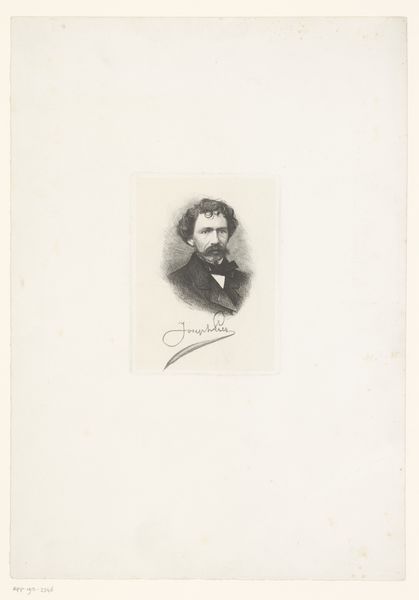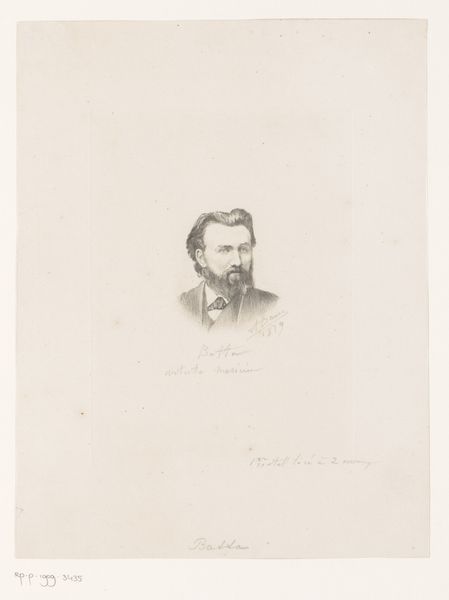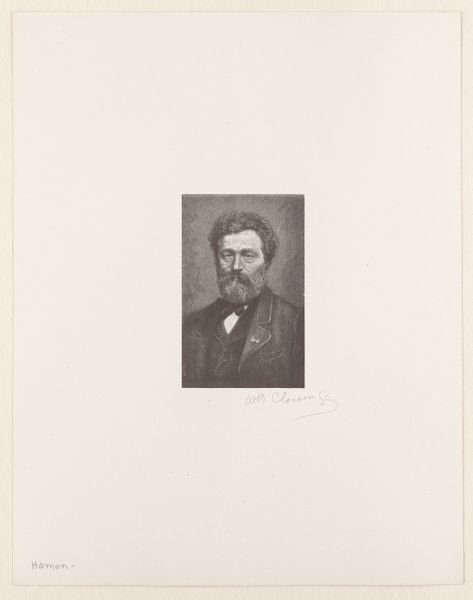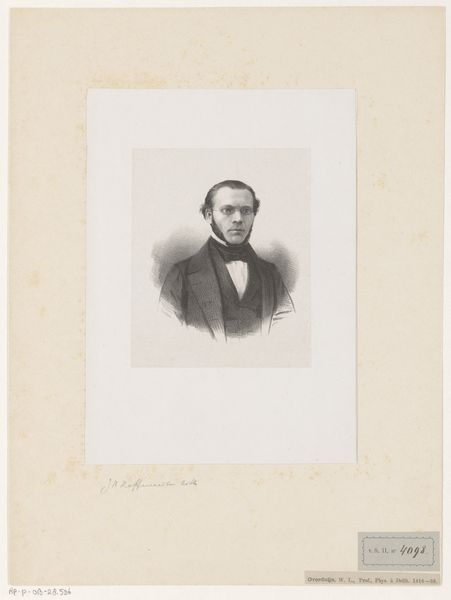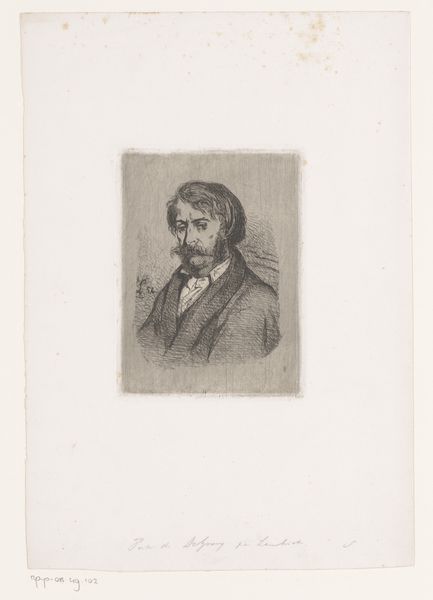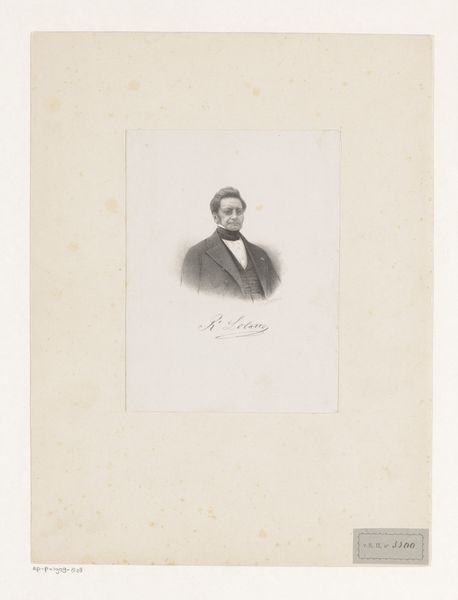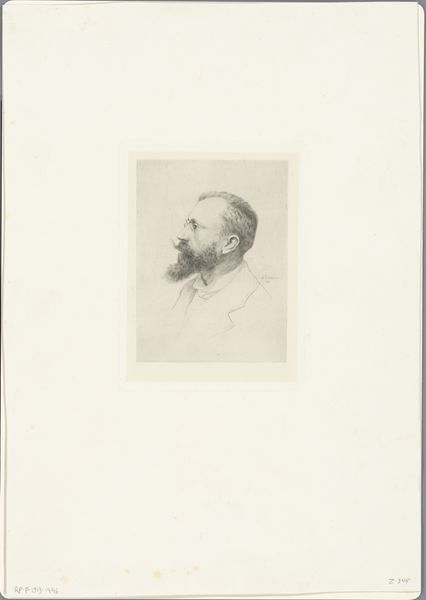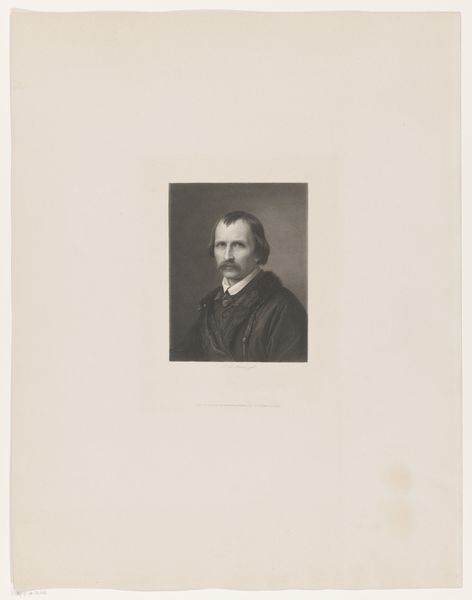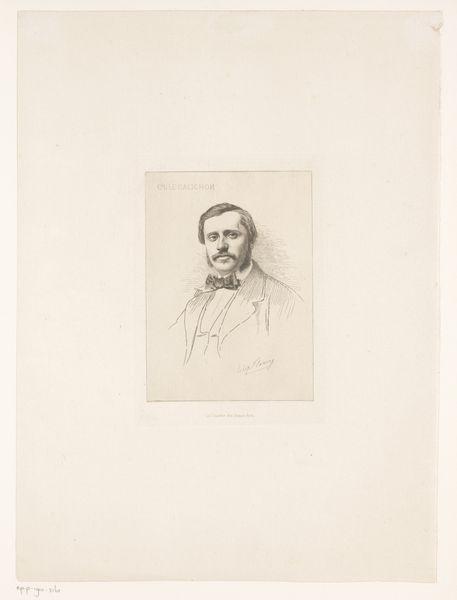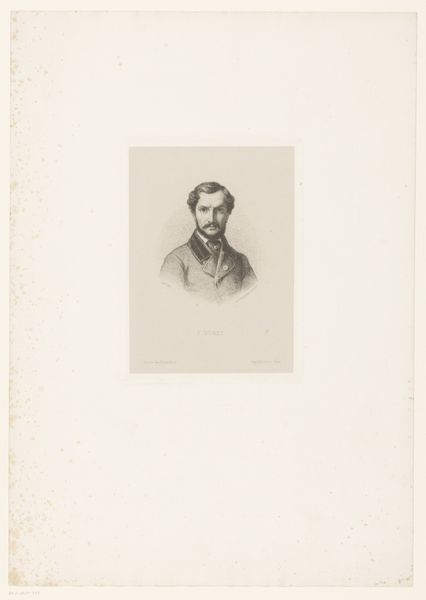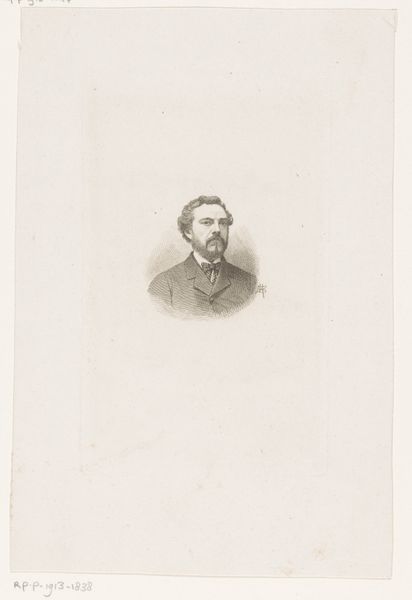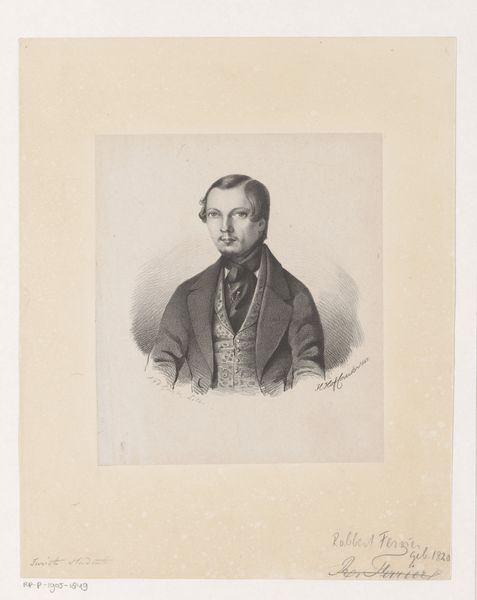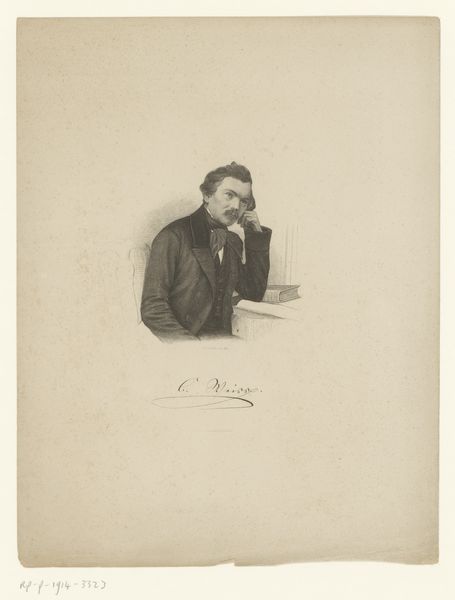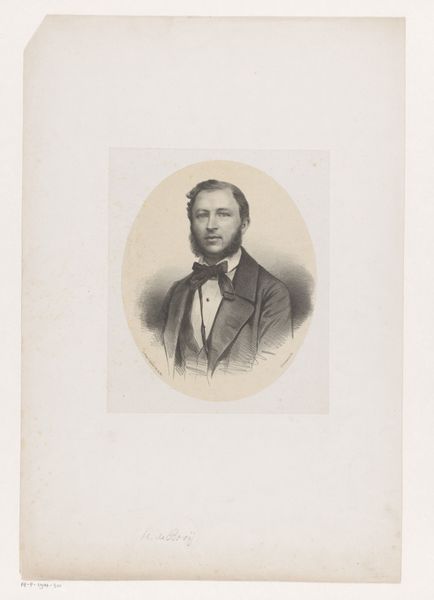
print, etching
#
portrait
# print
#
etching
#
old engraving style
#
academic-art
#
realism
Dimensions: height 195 mm, width 140 mm
Copyright: Rijks Museum: Open Domain
Auguste Danse made this portrait of Alexandre Batta in 1879 through etching, a printmaking technique where acid is used to cut into a metal plate, which is then inked and pressed onto paper. Consider the material properties of the metal plate. Its hardness allows for fine lines, creating detail in Batta’s beard and suit. The acid’s bite gives depth to the lines, influencing the contrast and tonality of the final image. The method required skill and time, each line carefully considered, and the plate meticulously prepared. Etching was a key method for disseminating images in the 19th century, serving a very different social function to painting or sculpture. This portrait, made for reproduction, speaks to the rise of a print culture and the increasing accessibility of art. It challenges the traditional hierarchy of artistic mediums. It invites us to appreciate the technical skill and labor involved in creating an image intended for wider distribution.
Comments
No comments
Be the first to comment and join the conversation on the ultimate creative platform.
